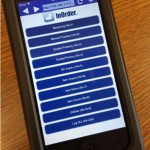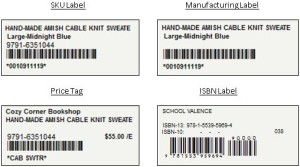Archive: November, 2017
Life After ERP Implementation
 Are you using your ERP System to its fullest advantage? Your company purchased the software, training and setup work was completed, and then it was turned on. A few years have gone by, and several updates have been made to the software. Some of the employees and even a few managers have come and gone. Few people in your department remember anything from the training, but you know the basics to get your day to day work done.
Are you using your ERP System to its fullest advantage? Your company purchased the software, training and setup work was completed, and then it was turned on. A few years have gone by, and several updates have been made to the software. Some of the employees and even a few managers have come and gone. Few people in your department remember anything from the training, but you know the basics to get your day to day work done.
Once your new system is live – and you’ve used it for a while – you may have a whole new set of needs and workflows. Equally as important as having the best technology is knowing what it can do for your business, and using it to continuously improve. Your business is constantly evolving and improving. It’s beneficial for long-time software users to evaluate how they’re using their software to determine whether improvements can be made in their processes. Here are some things to consider as you evaluate your system.
- Is your staff doing manual tasks that can be automated?
- Are you getting the most out of your web cart?
- How fast can customers find your products?
- Have your employees reverted to old processes?
This leads to frustration – and the feeling you’re stuck with something that isn’t working for you. So often, we hear “Why didn’t anyone tell us the system could do this?”
Align efficiencies with your organization’s goals
Getting the most from your ERP system means exploring, testing, and implementing new procedures and functions that maximize throughput, maximize the use of your resources, and maximize growth.
To accomplish this, you must fully understand how the system works today in your organization, as well as other ways it can potentially be configured to be used more effectively. This becomes especially important when new versions of the system become available because they include new capabilities or improvements to existing functionality.
It can be overwhelming to figure out a change strategy. Completing Annual Implementation Audits of your system and procedures can refresh the relationship between your system and your procedures. It can identify what you need, what you want, resolve annoyances, and answer questions about new features that can solve problems. Implementation Audits commonly reveal shortcuts that were not being used, and often find processes being done manually when your software could be doing them for you. You can identify functions, features, or optional modules that are not being used at all because nobody knew they existed. At this time, users and managers can attend refresher training sessions, keeping the knowledge and support of your ERP system in the hands of qualified users.
When was your last Annual Implementation Audit? When it’s time to re-align your ERP system with your processes, give us a call. Morse Data is committed to Change Management and Continuous Process Improvement. Changes can get out of line, but we can help get your ducks InOrder.
5 Ways InOrder ERP is Perfect for Managing your Inventory
Your products, your services, your location, your tools, and of course, your employees. All of these help your business succeed. If they’re not working together efficiently, it will impact your customer satisfaction and your bottom line. Here are five ways your ERP system can help.
Inventory Item Dimensions
If your company sells multiple variations of single items (style, color, size, etc.), then InOrder is for you. InOrder’s inventory management system allows you to define up to eight variations (dimensions) for a product, with unlimited values for each dimension.
When placing an order for an item with dimensions, simply enter the item number, and InOrder shows all available options in an easy to use grid.
Alternatively, you can specify the dimensional SKU or UPC code.
Reserving Inventory
What happens when a wholesale customer unexpectedly orders the last of your inventory for a particular product? How long do your retail customers have to wait for the backorder? And how many customers will you lose because they don’t want to wait?
With a good ERP system, you can prevent this from causing you to lose revenue from non-wholesale orders. Simply reserve a specific quantity of each item for your retail customers. When an order is placed by a wholesale customer, that reserved quantity isn’t even available.
Inventory Labels
Inventory barcodes are a necessity. Placing labels with barcodes on your products helps quickly identify them and can help prevent mistakes during picking, Point of Sale (POS), and physical inventory.
The InOrder Kit Definitions feature allows you to assemble multiple items for sale as a single item. With this functionality, you can track the inventory, component assembly and disassembly, sales, and costs of the assembled kit and its component items.
When an out-of-stock inventory item is ordered, you can substitute either a single in-stock inventory item for another brand of the same item, or you can substitute a group of inventory items (Kit-on-the-Fly). This feature works best when you have many items that are typically ordered together, but you need the ability to ship what is in stock.
RF Communication
 Use an RF communication system from top quality ERP software to efficiently handle inventory through real-time inventory tasks, improving productivity and control for major warehouse functions. After rolling out an RF system, a warehouse can significantly decrease paper processing and increase its inventory receipt processing from an average of 20 line items per hour to 55 line items per hour, per person. InOrder RF also supports inventory dimensions.
Use an RF communication system from top quality ERP software to efficiently handle inventory through real-time inventory tasks, improving productivity and control for major warehouse functions. After rolling out an RF system, a warehouse can significantly decrease paper processing and increase its inventory receipt processing from an average of 20 line items per hour to 55 line items per hour, per person. InOrder RF also supports inventory dimensions.
For more information about Inventory Management with InOrder, contact sales@morsedata.com.
6 PCI DSS Best Practices to Become Requirements in 2018
 Version 3.2 of the PCI DSS requirements was published in 2016, but several items are considered best practices until January 31, 2018. On February 1, 2018, they become requirements. One is for everyone meeting PCI DSS requirements, while the rest are for service providers.
Version 3.2 of the PCI DSS requirements was published in 2016, but several items are considered best practices until January 31, 2018. On February 1, 2018, they become requirements. One is for everyone meeting PCI DSS requirements, while the rest are for service providers.
Following are the best practices that become requirements on February 1, 2018.
Requirement 6.4.6 is for everyone meeting PCI DSS requirements. Whenever you implement a significant change to your system/network, verify that all appropriate PCI DSS controls are applied where needed, and update your documentation to reflect the change.
Requirements for Service Providers
- Document your cryptographic architecture (Requirement 3.5.1).
- Have a process to detect and report failures of critical security control systems. See PCI DSS Requirements 10.8 and 10.8.1 for examples of failures and what processes must include to respond to security control failures in a timely manner.
- If segmentation is used to isolate the CDE from other networks, perform penetration testing on segmentation controls/methods at least every six months and after any changes to them (Requirement 11.3.4.1).
- Executive Management must assign responsibilities and define a charter to maintain PCI DSS compliance. PCI DSS Requirement 12.4.1 provides details about what the compliance program must include, and who is considered “executive management.”
- Perform reviews at least quarterly to confirm personnel are following security policies and operational procedures, and document the results of those reviews (Requirements 12.11, 12.11.1).
Please refer to PCI DSS for your responsibilities under these requirements. If you have specific questions relating to your responsibilities for PCI DSS compliance, please direct them to your Qualified Security Assessor (QSA).







